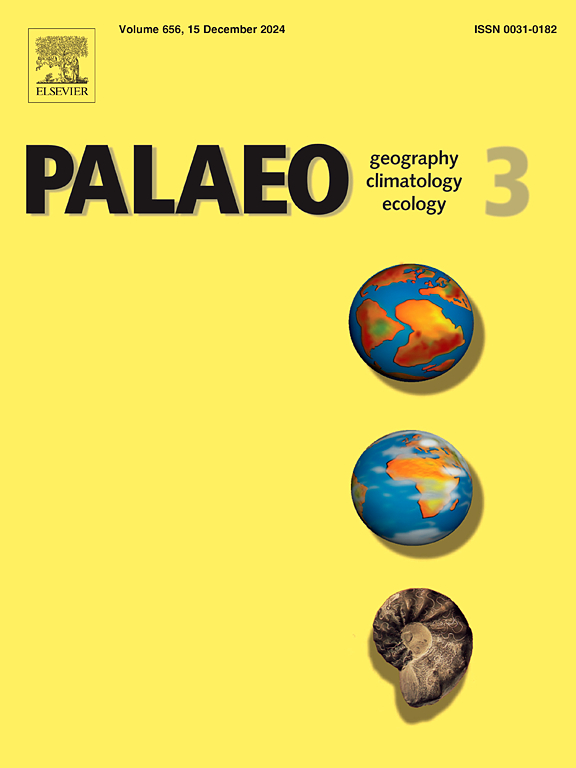Late Miocene carbonate-system evolution in the Xisha area, northern South China Sea
IF 2.6
2区 地球科学
Q2 GEOGRAPHY, PHYSICAL
Palaeogeography, Palaeoclimatology, Palaeoecology
Pub Date : 2025-02-13
DOI:10.1016/j.palaeo.2025.112812
引用次数: 0
Abstract
Carbonate systems in tropical regions reliably record abundant palaeoenvironmental information. Sedimentological and paleontological data from the Upper Miocene interval of core XK-1, obtained after lithofacies classification and semi-quantitative fossil analysis, allow for a detailed documentation of the carbonate-system evolution in the Xisha area, South China Sea. The lower portion of the Upper Miocene interval is characterized by an alternation of patch-reef deposits and lagoonal bioclastic deposits, whereas the upper portion is dominated by lagoonal bioclastic deposits. Reefs increased gradually during the early Late Miocene as a result of eustatic sea level falls. The assemblage of red algae (Mesophyllum, Lithothamnion), benthic foraminifera (Amphistegina radiata, Cycloclypeus, Heterostegina, Operculina), and planktonic foraminifera preferring deeper waters in the upper portion of the Upper Miocene interval suggests a deepening trend, resulting from moderate increases in eustatic sea level and basement subsidence. Moreover, the prevalence of red algae, Halimeda, acervulinids, and bryozoans over corals after 7.1 Ma indicates the influence of elevated nutrient availability. The upwelling due to intensified East Asian Winter Monsoon could have contributed to the increase in nutrient availability. Our results demonstrate that eustatic sea level, tectonics, and monsoonal conditions jointly influenced the carbonate system in the Xisha area, South China Sea. These findings have broader implications for understanding the Late Miocene development of carbonate systems in this region.
求助全文
约1分钟内获得全文
求助全文
来源期刊
CiteScore
5.90
自引率
10.00%
发文量
398
审稿时长
3.8 months
期刊介绍:
Palaeogeography, Palaeoclimatology, Palaeoecology is an international medium for the publication of high quality and multidisciplinary, original studies and comprehensive reviews in the field of palaeo-environmental geology. The journal aims at bringing together data with global implications from research in the many different disciplines involved in palaeo-environmental investigations.
By cutting across the boundaries of established sciences, it provides an interdisciplinary forum where issues of general interest can be discussed.

 求助内容:
求助内容: 应助结果提醒方式:
应助结果提醒方式:


